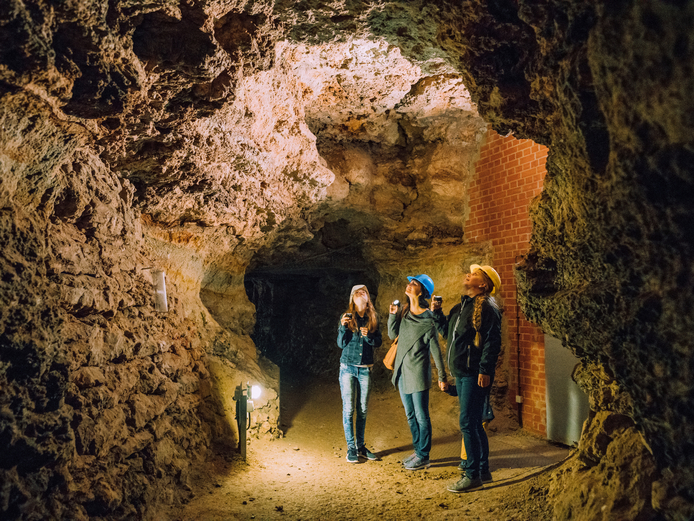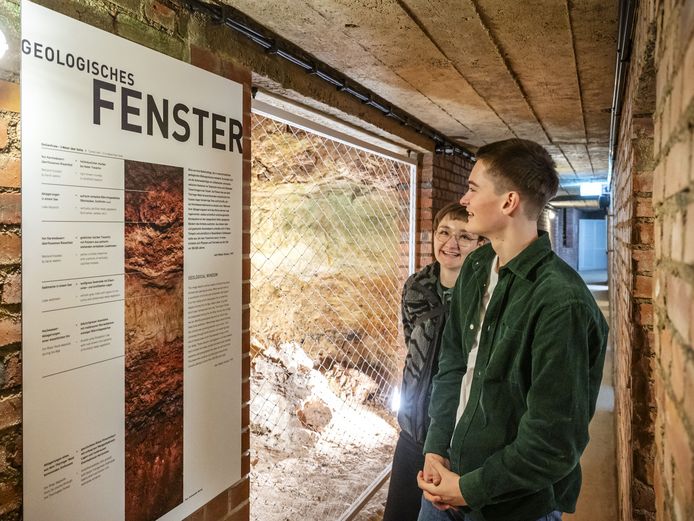General opening hours
Mo–Sun (closed on Tuesdays)
Winter | closed
Summer | 10:00–18:00

Park Cave Experience
Through time and climate
The Park Cave consists of a system of tunnels beneath the Park on the Ilm which were originally excavated at the end of the 18th century for use as a beer brewery. Today the tunnels located twelve metres underground shed light on 200,000 years of geological and human history. A presentation room is available for events of all kinds.
General opening hours
Mo–Sun (closed on Tuesdays)
Winter | closed
Summer | 10:00–18:00
Adults
5.00 €
Reduced
4.00 €
Pupils (16-20 years)
2.00 €
This institution is not accessible.
read moreDrainage tunnels – Underground walks – Air raid shelter – Subterranean museum
The Park Cave was built at the behest of Duke Carl August of Saxony-Weimar and Eisenach who dreamed of operating his own beer brewery. Between 1794 and 1796, a 500-metre tunnel system was built in the park for the purpose of storing beer and draining the process water. After the original plans were scrapped, workers continued extracting sand and gravel from the tunnels which resulted in an extensively branched tunnel system. From 1810 to 1830 members of the court and park visitors occasionally used the tunnels for underground strolls. In the final days of World War II, a section of the tunnel system was expanded into an air-raid shelter. This is where the museum rooms are located today. From 1992 to 1999 many of the tunnels which had been backfilled or had fallen into disrepair were restored and opened to the public again.
The Park Cave is located twelve metres underground between the Ilm escarpment and Belvedere Allee. Stairs near the Liszt House lead to the tunnel system below which ends at the so-called “Nadelöhr” (Needle’s Eye), an artificial opening in the cliff near the Ilm River.
The tunnels of the Park Cave wind their way through loose layers of gravel and floodplain sediment. On the tunnel ceilings one can spot fossilised plants and animals which had once lived on a prehistoric lake.


The new permanent exhibition tells the story of the park cave: created in the Goethe era, unused for decades, expanded into a shelter at the end of the Second World War, it has now been accessible again since 1997, interrupted by the pandemic and a comprehensive renovation.